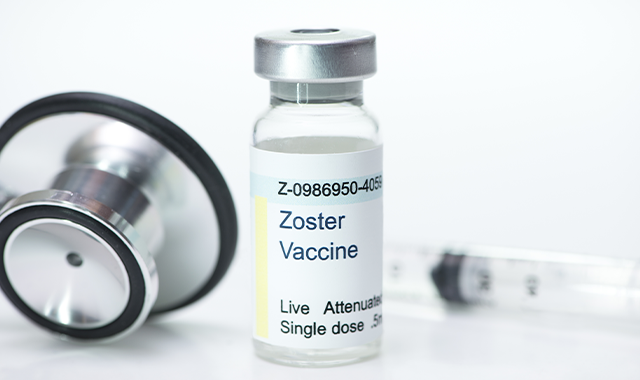Side Effects: Shingles vs. Vaccination
Side-by-side comparisons may persuade patients to receive the vaccine.

Ninety-nine percent of Americans over the age of 40 have had chickenpox, making them prime candidates for developing shingles during their lifetime. And yet, herpes zoster vaccination coverage hovers at just 35% among all adults aged 60 and older, according to the CDC. With two available vaccines-Shingrix and Zostavax-there’s ample opportunity for those numbers to rise.
“It’s incredibly important for adults to hear directly from their providers that they recommend the vaccine, and that the vaccine will benefit them individually,” medical epidemiologist Kathleen Dooling, MD of the Division of Viral Diseases at the CDC tells Drug Topics.
Pharmacists can educate their patients who are concerned about potential side effects of vaccination with a side-by-side comparison of the potential side effects of shingles and its complications.
Vaccination Side Effects
Shingrix (Recombinant Zoster Vaccine, or RZV), has proven to be over 90% effective across all age groups tested since its introduction in 2017. The CDC’s Advisory Committee on Immunization Practices (ACIP) recommends its use in immunocompetent adults aged 50 and older even if they have already had shingles or the Zostavax vaccine in the past. Shingrix is a two-dose series administered up to six months apart.
Trending: Gabapentin, Baclofen Misuse on the Rise in US Adults
The main side effect of Shingrix is redness, pain, and swelling at the injection site.
“We’re recommending to really warn people not to plan any strenuous activities in the couple of days following getting the Shingrix dose,” says Dooling.
Other Shingrix side effects are mild and last up to 3 days, including:
- Tiredness
- Muscle pain
- Headache
- Chills
- Fever
- Upset stomach
Severe allergic reactions to Shingrix are less common and include hives, swelling of the face and throat, difficulty breathing, rapid heartbeat, dizziness, and overall weakness.
Zostavax (Zoster Vaccine Live, or ZVL) has been available since 2006. According to the FDA, it may reduce the risk of shingles by about 50% in people aged 60 and older, and by about 70% in people aged 50–59.
The CDC advises that ZVL can be administered if a person is allergic to Shingrix, prefers Zostavax, or requests immediate vaccination and Shingrix is unavailable. Only one injection of Zostavax is required.
Read More: Shingles Among Most Painful Medical Conditions
The most common side effects of Zostavax occur at the injection site. They include redness, pain, itching, swelling, a hard lump, warmth, or bruising. Headache may also occur.
More serious allergic reactions to Zostavax include:
- Difficulty breathing or swallowing
- Fever
- Hives at the injection site
- Swollen glands
- Joint or muscle pain
- Nausea
- Rash
Shingles Side Effects
When the latent varicella zoster virus (VZV) that has lain dormant since an earlier episode of chickenpox reactivates as herpes zoster, its primary symptom is a painful, blistering rash that usually presents on one side of the body. Common symptoms of shingles include:
- Headache
- Fatigue
- Weakness
- Itching
- Swollen lymph nodes
- Fever or chills
- Muscle or joint pain
- Nausea and vomiting
- Sensitivity to light
Approximately one third of all shingles patients develop serious complications. In cases of herpes zoster ophthalmicus, they can include corneal ulcers, glaucoma and vision loss. Enteric zoster can cause severe pain and gastrointestinal pain, including inflammatory bowel disease and Crohn’s disease.
Finally and importantly, the threat of postherpetic neuralgia - a complication of shingles that manifests as months and even years of excruciating pain for its sufferers - can be totally eliminated through vaccination.
When a vaccination offers protection from a host of shingles-related complications, why would anyone choose not to get it?